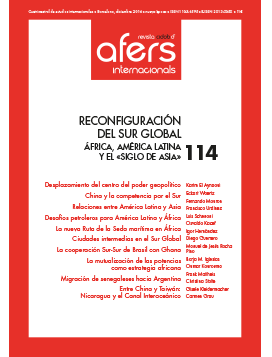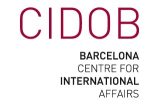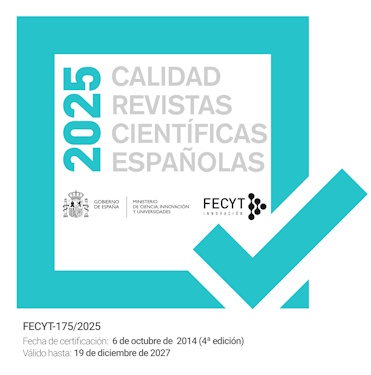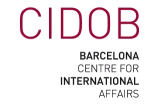Las ciudades intermedias en la integración territorial del Sur Global
Palabras clave:
ciudades intermedias, Hábitat iii, BRICS, MINT, Sur Global, integración territorialResumen
Revista CIDOB d’Afers Internacionals, nº 114
Cuatrimestral (septiembre-diciembre 2016)
ISSN:1133-6595 | E-ISSN:2013-035X
DOI: https://doi.org/10.24241/rcai.2016.114.3.109
Las «economías de aglomeración» han catalizado el progreso y la modernización de muchos de las países del Sur Global, pero también han contribuido a desequilibrar el territorio, ampliando las brechas entre población urbana y rural y acumulando elevados déficits ambientales y sociales. A diferencia de los BRICS (Brasil, Rusia, India, China y Sudáfrica), las economías que integran los MINT (México, Indonesia, Nigeria y Turquía) presentan una mayor integración territorial de sus sistemas urbanos, con ciudades intermedias que ejercen de «economías de intermediación» con su hinterland rural y que pueden contribuir a lograr objetivos fijados por la Agenda 2030 para el Desarrollo Sostenible de Naciones Unidas. La Conferencia de las Naciones Unidas Hábitat iii de octubre de 2016 ha situado a las ciudades intermedias en el corazón de la «Nueva Agenda Urbana»; el objetivo es impulsar políticas nacionales urbanas en muchas economías del Sur Global que permitan fortalecer su papel como principal instrumento de integración económica y cohesión regional.
Citas
Angel, Shlomo. Making Room for a Planet of Cities. Cambridge, MA: Lincoln Institute of Land Policy, 2011.
BBC. «The Mint countries: Next economic giants?». BBC News (6 de enero 2014) (en línea) http://www.bbc.com/news/magazine-25548060
Christiaensen, Luc; De Weerdt, Joachim y Todo, Yasuyuki. «Urbanization and Poverty Reduction. The Role of Rural Diversification and Secondary Towns». World Bank Policy Research Working Paper, n.º 6.422 (2013).
Coface. Morocco: the challenge of becoming an emerging economy. Bois-Colombes: Coface, 2014.
Didier, Tatiana; Hevia, Constantino y Schmukler, Sergio. «How Resilient Were Emerging Economies to the Global Crisis?». World Bank Policy Research Working Paper, n.º 5.637 (2011).
Dobbs, Richard; Smit, Sven; Remes, Jaana; Manyika, James; Roxburgh, Charles y Restrepo, Alejandra. «Urban world: Mapping the economic power of cities». Report McKinsey Global Institute (marzo de 2011) (en línea) http://www.mckinsey.com/global-themes/urbanization/urban-world-mapping-theeconomic-power-of-cities
ESPON. Second-Tier Cities and Territorial Development in Europe: Performance, Policies and Prospects (Final Report). Luxemburgo: ESPON & European Institute of Urban Affairs, 2012.
ESPON. Territories Finding a New Momentum: Evidence for Policy Development (Third ESPON Synthesis Report). Luxemburgo: ESPON, 2014.
Fix, Mariana; Arantes, Pedro y Tanaka, Giselle. «São Paulo, Brazil», en: UN-Habitat. Understanding Slums: Case Studies for the Global Report on Human Settlements 2003. Londres y Sterling: Earthscan Publications, 2003, p. 226-227.
Goble, Paul A. «Sociologist: Russians in biggest cities feel the most pain from crisis». Euromaidan Press (23 de diciembre de 2014) (en línea) http://euromaidanpress.com/2014/12/23/sociologist-russians-in-biggest-cities-feel-themost-pain-from-crisis/
Goldman Sachs Global Economics Group. BRICS and Beyond. Nueva York: Goldman Sachs, 2007.
Habitat iii. «The Right to the City and Cities for All». Policy Paper Framework (31 de diciembre de 2015) (en línea) https://www2.habitat3.org/bitcache/fc19b4f547e02ac8b5a194781f3c2db61ddf66b1vid=566136&disposition=inline&op=view
Hewitt, Duncan. «China’s Real Estate Conundrum: The Big Property Bubble vs. Ghost Towns». International Business Times (19 de abril de 2016) (en línea) http://www.ibtimes.com/chinas-real-estate-conundrum-big-propertybubble-vs-ghost-towns-2354090
IBRD y WB/ International Bank for Reconstruction and Development y World Bank. Urban China: Toward Efficient, Inclusive, and Sustainable Urbanization. Washington, DC: World Bank, 2014 (en línea) https://www.worldbank.org/content/dam/Worldbank/document/EAP/China/WEB-Urban-China.pdf
IBRD y WB/ International Bank for Reconstruction and Development y World Bank. Global Monitoring Report 2015/2016: Development Goals in an Era of Demographic Change. Washington, DC: World Bank, 2015a.
IBRD y WB/ International Bank for Reconstruction and Development y World Bank. Rise of the Anatolian Tigers: Turkey Urbanization Review. Washington, DC: World Bank, 2015b (en línea) https://openknowledge.worldbank.org/bitstream/handle/10986/22388/87180.pdf?sequence=5&isAllowed=y
Koen, Vincent; Herd, Richard; Wang, Xiao; Chalaux, Thomas. «Policies for Inclusive Urbanisation in China». OECD Economic Department Working Papers, n.º 1090 (2013). Li, Bingqin y An, Xiangsheng. «Migration and small towns in China Power hierarchy and resource allocation». Working Paper Series on Rural-Urban Interactions and Livelihood Strategies, IIED Working Paper, n.º 16 (2009).
Llop, Josep Maria y Bellet, Carme (eds.). Ciudades Intermedias: urbanización y sostenibilidad. Lleida: Editorial Milenio, 2000.
Llop, Josep Maria y Bellet, Carme (eds.). Ciudades Intermedias y urbanización mundial. Lleida: Editorial Milenio, 2003.
Llop, Josep Maria y Usón, Ezequiel (eds.). Ciudades y territorio. Intermediación y desarrollo. Lleida: Editorial Milenio, 2014.
McGranahan, Gordon. Learning from urbanization in the BRICS (IIED Technical Briefing). Nueva York: IIED y UNFPA, 2012 McKinsey Global Institute. Construyendo ciudades competitivas: La clave para el crecimiento en América Latina. McKinsey & Company, 2011.
Naciones Unidas. Agenda de Acción de Addis Abeba (AAAA). Tercera Conferencia Internacional de Financiación al Desarrollo, 13-16 de julio, Etiopía, 2015a.
Naciones Unidas. Marco de Sendai para la Reducción del Riesgo de Desastres 2015-2030. Ginebra: Naciones Unidas, 2015b.
News24. «SA’s Recession: how did we get into this mess?». 10 de junio de 2014 (en línea) http://www.news24.com/MyNews24/SAs-Recession-how-did-weget-into-this-mess-20140610
O’Neill, Jim. «Building Better Global Economic BRICs». Global Economics Paper, n.º 66 (2001) (en línea) http://www.goldmansachs.com/our-thinking/archive/archive-pdfs/build-better-brics.pdf
OECD/ Organization of Economic Co-operation and Development. OECD Territorial Reviews. The Gauteng City-Region, South Africa. París: OECD Publishing, 2011.
ONU-Hábitat. Declaración de Cuenca: promoviendo redes de ciudades intermedias para alcanzar un desarrollo urbano y territorial sostenible. Conferencia temática Ciudades Intermedias, Cuenca (Ecuador), del 9 al 11 de noviembre de 2015.
Roberts, Brian H. Managing Systems of Secondary Cities. Policy Responses in International Development. Bruselas: Cities Alliance, UNOPS, 2014.
Satterthwaite, David. «Outside the Large Cities. The demographic importance of small urban centres and large villages in Africa, Asia and Latin America». IIED, Human Settlements Discussion Paper – Urban Change, n.º 3 (2006).
Spence, Michael; Clarke, Patricia y Buckley, Robert (eds.). Urbanization and Growth. Commission on Growth and Development. Washington, DC: IBRD y WB, 2009. Tacoli, Cecilia; McGranahan, Gordon y Satterthwaite, David. Urbanisation, rural–urban migration and urban poverty. IIED Working Paper, 2015.
The African Union Comission. Agenda 2063. Framework Document: The Africa We Want. Septiembre de 2015.
UCLG/ United Cities and Local Governments. UCLG Frame Document for intermediary cities. Planning and management of sustainable urban development.Universidad de Lleida y UCLG, 2013 (en línea) https://www.uclg.org/sites/default/files/uclg_frame_document_ic.pdf
UCLG-GOLD/ United Cities and Local Governments-Global Observatory on Local Democracy and Decentralisation. «La descentralización y la democracia local en el mundo». Primer Informe Mundial. GOLD i (2008).
UCLG-GOLD/ United Cities and Local Governments-Global Observatory on Local Democracy and Decentralisation. «El financiamiento de los gobiernos locales: los desafíos del siglo xxi». Resumen Ejecutivo. Segundo Informe Mundial sobre la Descentralización y la Democracia Local. GOLD i i (2010).
UCLG-GOLD/ United Cities and Local Governments-Global Observatory on Local Democracy and Decentralisation. Local and Regional Governments. Partners for the Global Agenda. Barcelona: UCLG, 2013.
UCLG-GOLD/ United Cities and Local Governments-Global Observatory on Local Democracy and Decentralisation. Fourth Global Report on Decentralization and Local Democracy (GOLD iv): Co-creating the Urban Future: The Agenda of Metropolis, Cities and Territories. UCLG, 2016.
UN/ United Nations. «Addis Ababa Action Agenda». Third International Conference on Financing for Development, UN, 2015a.
UN/ United Nations. Transforming our World: The 2030 Agenda for Sustainable Development. UN, 2015b.
UN-DESA/ Department of Economic and Social Affairs. World Urbanization Prospects. The 2014 Revision. Nueva York: UN, 2015.
UN-Habitat. The State of Asian Cities 2010/11. Fukuoka: UN-Habitat, 2010.
UN-Habitat. «The Economic Role of Cities». The Global Urban Economic Dialogue Series. Nairobi: UN-Habitat, 2011.
UN-Habitat. State of the World’s cities 2012/2013. Prosperity of Cities. Nueva York: Routledge, 2013a.
UN-Habitat. «Unleashing the Economic Potential of Agglomeration in African Cities». The Global Urban Economic Dialogue Series. Nairobi: UN-Habitat, 2013b.
UN-Habitat. The state of african cities 2014, Re-imagining sustainable urban transitions. Kenya: UN-Habitat, 2014.
UN-Habitat. «Habitat iii Policy Paper 1 – Right to the City and Cities for All». UN, 2015.
UN-Habitat. «New Urban Agenda, Draft Outcome Document for Adoption in Quito». Habitat iii, 10 de septiembre de 2016.
Wilson, Dominic y Stupnytska, Anna. «The N-11: More Than an Acronym». The Goldman Sachs Group, 28 de marzo de 2007 (en línea) http://www.goldmansachs.com/our-thinking/archive/archive-pdfs/brics-book/brics-chap-11.pdf













